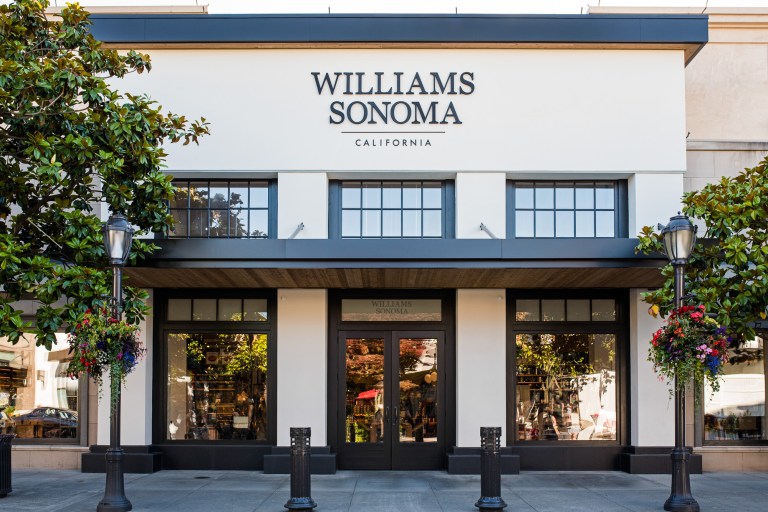
Last week the greater Seattle area learned it will soon have access to its very own “dual-concept” Williams Sonoma store.
Part of the dual-concept upgrade is aesthetic, offering what the company refers to as a more “contemporary look” for its retail space — complete with the high ceilings and modern tile floors that have become something of a design favorite for the brand.
But the bigger upgrade is a combination offering — its traditional focus on food and an expansion into something more akin to a lifestyle brand — as well as an enhanced menu of products. Home furnishings make up one new area of focus, and an in-store experience built around education and exclusive access to a unique marketplace of goods constitutes another.
The Seattle Williams Sonoma storefront will inhabit a 7,000-square-foot structure in Seattle’s University Village, home to Amazon’s first brick-and-mortar bookstore. It will be split between the brand’s traditional kitchen focus and its expanded interests in home furnishings, with dedicated floor space reserved for living room, bedroom, dining room and home office furniture. Where there are core goods like furniture, there will be accessories, bedding, pillows, throw blankets and decorative knick-knacks.
Beyond access to goods, the new location brings a new focus on connecting the brand not only to customers looking for goods, but also to those looking for a unique experience. Interior design services are available for those with an interest in home decor insights, and cookbooks clubs and cooking classes are offered for both adults and children.
“I am so proud to bring our new retail concept to this city,” said Janet Hayes, president of Williams Sonoma. “Seattle is full of forward-thinking people and they deserve a place to shop that is experiential as well as community-minded.”
In addition to expanded access and in-store experience, the new dual-concept Williams Sonoma is focusing on showcasing local artisans and their products to create a more differentiated and consumer-connected feeling for its customer base.
The available goods — including the cast of local chefs, cooking classes and types of purchasable items on store shelves — will vary across the dual-concept locations. For example, Ponce City, Atlanta, local offerings will be geared differently that what is available in the Mosaic District in Washington, D.C.
What unites the new offerings, according to a brand spokesperson, is an evolving commitment to making the in-store experience at Williams Sonoma both reliable and unique for every customer. The brand aims to be reliable through quality offerings, design sensibility and customer service experience, and unique in that what a customer hears, tastes and does varies depending on the doors they walk through — and in which city they do it.
While the dual-concept stores are in their early stages, it is worth noting that Williams Sonoma has managed to consistently log stronger-than-expected earnings in a physical retail landscape increasingly riddled with casualties. As of last quarter, the brand saw comparable sales up 3.2 percent year-over-year, and revenue up 1.2 percent to $1.1 billion.
The in-store experience is not the whole story, of course. During the firm’s last call with investors, CEO Laura Allen noted the firms years-long investment and upgrades in supply chain process, eCommerce functions like order visibility for customers, back order management and multi-channel efficiencies as key to the brand’s growth during turbulent retail times.
Those growing same-store sales come during a quarter where same-store sales often dip into the red for retailers, indicating Williams Sonoma is finding a way to bring customers away from mobile devices and into physical stores when others are struggling to do just that.
It might be worth watching those dual-concepts stores a little more closely, especially as they seem to offer clues regarding which elements build the “better customer experience” in a brick-and-mortar store — and why it looks something like a marketplace of goods.